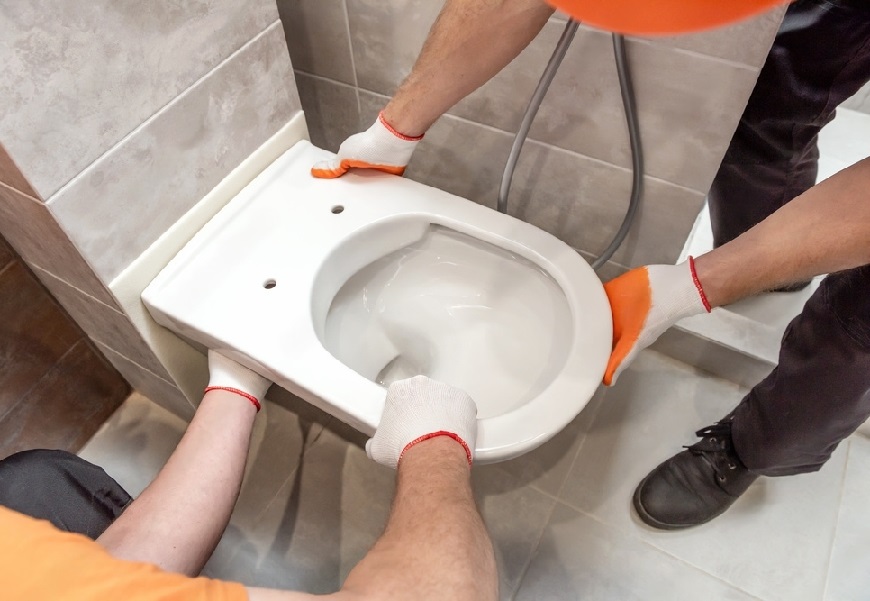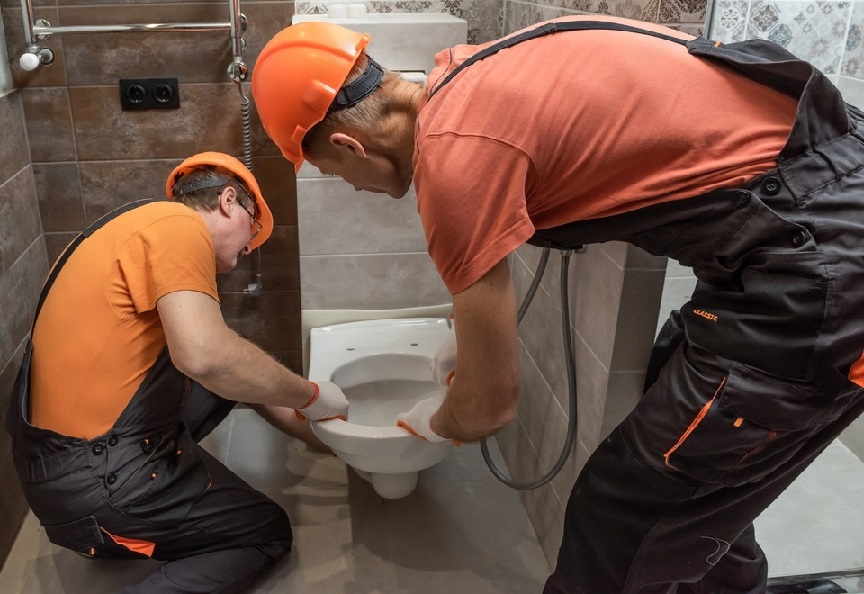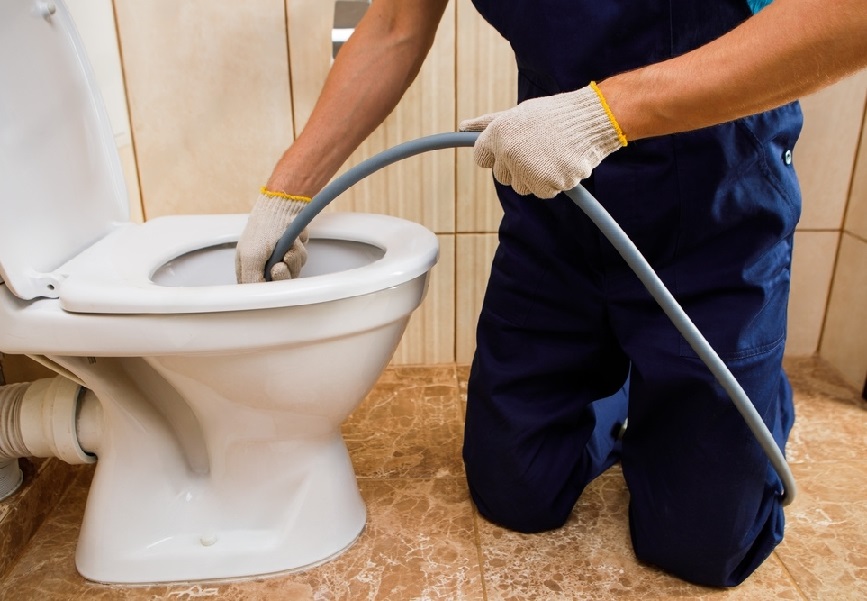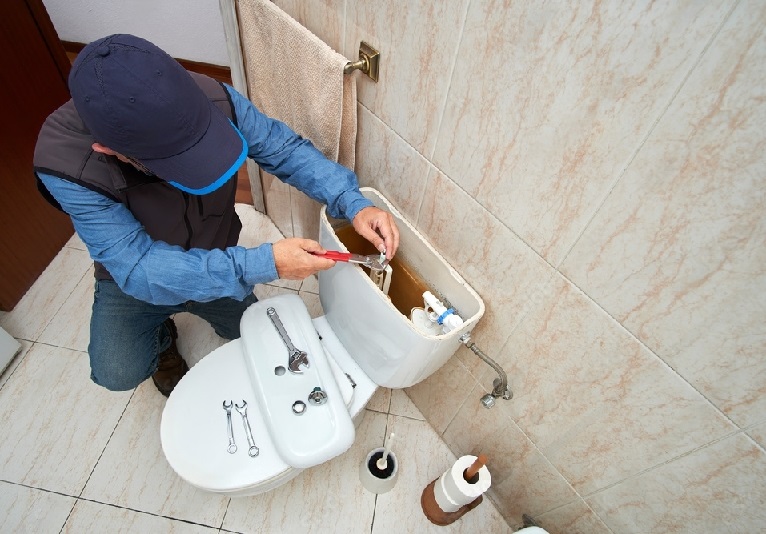Table of Contents
Introduction
In recent years, bidets have become increasingly popular as people seek more hygienic and environmentally friendly alternatives to traditional toilet paper. However, like any other appliance, bidet seat require regular maintenance to ensure optimal performance and longevity. In this comprehensive guide, we’ll explore essential bidet maintenance tips to help you keep your bidet clean, functional, and hygienic.

Regular Cleaning
Daily Wiping and Rinsing
One of the simplest and most effective ways to maintain your bidet is by incorporating daily cleaning into your bathroom routine. After each use, simply wipe down the bidet seat and nozzle with a damp cloth or sponge to remove any residue or splashes. Then, rinse the area with water to ensure thorough cleanliness.
Using Mild Soap and Water
For deeper cleaning, use a mild soap solution to gently scrub the surfaces of the bidet seat. Avoid harsh chemical cleaners, as they can damage the bidet’s components and irritate sensitive skin. Instead, opt for gentle, non-abrasive cleaners that won’t harm the materials of the bidet.
Avoiding Harsh Chemicals
When cleaning your bidet seat, it’s important to avoid using harsh chemicals that can damage the delicate components of the appliance. Stick to mild, non-abrasive cleaners that are safe for use on plastic, ceramic, and stainless steel surfaces. Additionally, avoid using abrasive scrubbers or brushes that can scratch the finish of the bidet.

Deep Cleaning
Weekly or Bi-weekly Schedule
In addition to daily cleaning, it’s essential to schedule regular deep cleaning sessions for your bidet. Aim to deep clean your bidet seat at least once a week or bi-weekly, depending on usage. This involves disassembling removable parts, such as the nozzle and seat, and thoroughly cleaning them with soap and water.
Using Vinegar Solution
To remove stubborn stains or mineral deposits from your bidet, consider using a vinegar solution for deep cleaning. Simply mix equal parts vinegar and water in a spray bottle and apply it to the affected areas. Let the solution sit for a few minutes before wiping it away with a clean cloth. Vinegar is a natural disinfectant and can help dissolve mineral buildup without damaging the bidet’s surfaces.

Preventive Maintenance
Checking for Leaks or Drips
Regularly checking your bidet for leaks or drips is crucial to prevent water damage and ensure its proper functioning. Even a small leak can lead to significant water wastage and potential damage to your bathroom floor or surrounding fixtures. By conducting routine inspections, you can identify and address any issues before they escalate into costly problems.
Visual Inspection
Start by visually inspecting the area around your bidet for any signs of moisture or water stains. Check the floor, walls, and base of the bidet for evidence of leaks or drips. Pay close attention to areas where water supply lines connect to the bidet, as well as any joints or seams where leaks are more likely to occur.
Check Water Supply Connections
Next, inspect the water supply connections to ensure they are secure and free from leaks. Trace the water supply line from the bidet to the shut-off valve, checking for any signs of leakage along the way. Tighten any loose connections using a wrench, being careful not to over-tighten, which could damage the fittings.
Test for Leaks
To test for leaks, turn on the water supply to the bidet and observe the connections and surrounding areas for any signs of water leakage. Run the bidet through its various functions, including the spray nozzle and adjustable settings, while closely monitoring for any dripping or pooling of water. If you notice any leaks, immediately shut off the water supply and address the issue before using the bidet further.
Inspect Hose Connections
Check the hoses connecting the water supply to the bidet for any signs of wear, damage, or deterioration. Look for cracks, kinks, or bulges in the hose that may indicate a potential leak. If you notice any damage, replace the hose with a new one to prevent leaks and ensure proper water flow to the bidet.
Check Seals and Gaskets
Inspect the seals and gaskets around the nozzle and other moving parts of the bidet for signs of wear or deterioration. Over time, these components can degrade due to exposure to water and use, leading to leaks or drips. Replace any damaged seals or gaskets with new ones to maintain a watertight seal and prevent leakage.
Monitor for Persistent Drips
Even after tightening connections and replacing damaged components, it’s important to monitor your bidet for persistent drips or leaks. Sometimes, leaks may occur intermittently or develop over time, requiring ongoing vigilance. If you notice any recurring leaks, consider contacting a professional plumber or technician for further inspection and repair.
Preventative Maintenance
In addition to regular inspections, practicing preventative maintenance can help minimize the risk of leaks or drips in your bidet. Avoid using harsh cleaning agents or abrasive materials that can damage seals or gaskets. Keep the area around the bidet clean and dry to prevent moisture buildup, which can contribute to leaks over time.
Tightening Loose Bolts or Connections
Ensuring that the bolts and connections of your bidet seat are properly tightened is essential for maintaining stability and preventing potential malfunctions or accidents. Over time, regular use of the bidet can cause bolts and connections to loosen, compromising the seat’s stability and functionality. By periodically checking and tightening these components, you can prolong the lifespan of your bidet seat and ensure a safe and comfortable experience.
Identifying Loose Bolts or Connections
Start by visually inspecting the underside of your bidet seat for any loose bolts or connections. Look for signs of movement or instability when sitting on the seat, as this may indicate loose fasteners or connections. Use a flashlight if necessary to get a clear view of the bolts and connections in dimly lit areas.
Gathering Necessary Tools
Before tightening any loose bolts or connections, gather the necessary tools to ensure a smooth and efficient process. Depending on the type of fasteners used, you may need a screwdriver, wrench, or Allen key. Check the manufacturer’s instructions or manual for specific guidance on the appropriate tools and techniques for tightening bolts and connections.
Tightening Bolts and Fasteners
Using the appropriate tool, carefully tighten each bolt or fastener, starting with those that are visibly loose or wobbly. Apply gentle pressure and turn the tool clockwise to tighten the bolts securely, being careful not to overtighten, which could strip the threads or damage the fasteners. Work your way around the seat, checking and tightening each bolt or connection until they are all snug and secure.
Checking Stability
Once you’ve tightened all the bolts and connections, test the stability of the bidet seat by gently rocking it back and forth. It should feel firm and stable, with minimal movement or wobbling. Sit on the seat and shift your weight to ensure that it can support your body without shifting or shifting. If you notice any remaining looseness or instability, recheck the bolts and connections to ensure they are properly tightened.
Lubricating Moving Parts
To keep your bidet operating smoothly, lubricate any moving parts as needed. Apply a small amount of silicone or water-based lubricant to hinges, sliders, and other moving components to reduce friction and prevent squeaking or sticking. Be sure to use a lubricant that is safe for use with plastic and rubber materials.

Troubleshooting Tips
Addressing Common Issues
Even the most well-maintained bidet seats can encounter issues from time to time. Understanding how to troubleshoot common problems can help you resolve issues quickly and effectively, ensuring uninterrupted use of your bidet seat. In this section, we’ll explore troubleshooting tips for addressing common issues that may arise with your bidet seat.
Addressing Low Water Pressure
Identifying the Issue
If you notice reduced water pressure from your bidet seat, there are several potential causes to consider. Start by checking the water supply valve to ensure it’s fully open. Additionally, inspect the bidet’s water filter for any clogs or debris that may be restricting water flow.
Troubleshooting Steps
- Ensure the water supply valve is fully open.
- Clean or replace the bidet’s water filter if it’s clogged or dirty.
- Check for any kinks or obstructions in the water supply hose and straighten them if necessary.
- If the issue persists, contact the manufacturer for further assistance or consider consulting a plumber.
Resolving Nozzle Misalignment
Identifying the Issue
Nozzle misalignment can occur due to various reasons, such as accidental movement or mechanical issues. If you notice that the bidet’s spray nozzle is not aligned correctly, it may result in ineffective cleansing or discomfort during use.
Troubleshooting Steps
- Manually adjust the position of the spray nozzle to ensure it’s properly aligned with the user’s body.
- Check for any obstructions or debris blocking the nozzle’s movement and clean them if necessary.
- If the bidet seat features adjustable nozzle positions, experiment with different settings to find the most comfortable and effective position.
- If the issue persists, consult the manufacturer’s manual for guidance on recalibrating or servicing the nozzle mechanism.
Dealing with Electrical Malfunctions
Identifying the Issue
Electrical malfunctions can manifest in various ways, such as a non-responsive control panel or intermittent power supply. If your bidet seat is experiencing electrical issues, it’s essential to address them promptly to ensure safety and functionality.
Troubleshooting Steps
- Check the power cord and outlet to ensure they are securely connected and functioning correctly.
- Reset the bidet seat by unplugging it from the power source for a few minutes, then plugging it back in.
- If the control panel is unresponsive, check for any visible damage or signs of wear and tear. Replace the control panel if necessary.
- If the bidet seat continues to experience electrical issues, contact the manufacturer for technical support or consider seeking assistance from a qualified electrician.
Consulting Manufacturer’s Manual
If you’re unsure how to troubleshoot a specific issue with your bidet, consult the manufacturer’s manual for guidance. The manual will provide detailed instructions on how to operate and maintain your bidet, as well as troubleshooting tips for common problems. You can also contact the manufacturer’s customer service department for assistance with more complex issues or technical support.
Seeking Professional Assistance
In some cases, you may need to seek professional assistance to resolve a problem with your bidet. If you’re unable to identify or fix the issue on your own, contact a qualified plumber or technician who specializes in bidet repair. They will have the knowledge and expertise to diagnose and fix any issues with your bidet, ensuring it continues to function properly.

Seasonal Maintenance
Adjusting Water Temperature Settings
As the seasons change, you may need to adjust the water temperature settings on your bidet to ensure comfort and efficiency. In the colder months, you may want to increase the water temperature slightly to offset the chill in the air. Conversely, in the warmer months, you can lower the water temperature to conserve energy and reduce the risk of scalding.
Checking for Damage
Periodically inspect your bidet for any signs of damage caused by extreme temperatures or weather conditions. Check for cracks, warping, or discoloration that may indicate exposure to harsh elements. If you notice any damage, take steps to repair or replace the affected components to prevent further deterioration and maintain the integrity of your bidet.
Winterizing Outdoor Bidets
If you live in a cold climate and have an outdoor bidet, it’s important to take steps to winterize it before temperatures drop below freezing. Disconnect the water supply line and drain any remaining water from the bidet to prevent freezing and damage to the internal components. Cover the bidet with a protective tarp or insulation to shield it from snow and ice.

Environmental Considerations
Conserving Water Usage
Water conservation is an essential aspect of responsible environmental stewardship, and bidet seats offer an opportunity to reduce water usage while maintaining hygiene and comfort in the bathroom. By implementing efficient usage practices and leveraging the features of bidet seats, individuals can contribute to water conservation efforts without compromising personal cleanliness.
Adjusting Water Pressure and Temperature
One of the primary ways to conserve water with a bidet seat is by adjusting the water pressure and temperature settings to optimize efficiency without sacrificing comfort. Most bidet seats feature adjustable water pressure controls, allowing users to customize the intensity of the spray according to their preferences. By using lower water pressure settings, less water is used per wash cycle, resulting in significant water savings over time.
Similarly, adjusting the water temperature settings to use cooler water can further reduce water consumption. While warm water may provide added comfort, especially during colder seasons, using cooler water can be refreshing and requires less energy to heat, thereby conserving both water and energy resources.
Utilizing Eco-Friendly Cleaning Options
Many bidet seats offer additional cleaning options, such as a nozzle oscillation or pulsating spray mode, which can help improve cleaning efficiency and reduce the need for prolonged water usage. These features distribute water more evenly and effectively, requiring less water overall to achieve the same level of cleanliness.
Additionally, some bidet seats come equipped with a self-cleaning nozzle function, which eliminates the need for manual cleaning and reduces water usage associated with maintenance tasks. By leveraging these eco-friendly cleaning options, users can minimize water waste while maximizing hygiene and comfort.
Implementing Shorter Wash Cycles
Another simple yet effective strategy for conserving water with a bidet seat is to reduce the duration of each wash cycle. While it’s essential to ensure thorough cleaning, most users find that shorter wash cycles are sufficient for maintaining hygiene. By limiting the duration of each wash cycle, less water is used per use, resulting in cumulative water savings over time.
Promoting Dual Flush Functionality
Some bidet seats offer dual flush functionality, allowing users to choose between a full flush and a partial flush, depending on their needs. By selecting the appropriate flush option based on the waste volume, users can minimize unnecessary water usage while still ensuring effective waste removal. Encouraging the use of the partial flush option for liquid waste and reserving the full flush option for solid waste can help optimize water conservation efforts.
Educating Users on Water-Saving Practices
Educating users on water-saving practices and the environmental benefits of water conservation is crucial for promoting sustainable behavior change. Providing clear instructions and guidance on how to adjust water pressure and temperature settings, utilize eco-friendly cleaning options, and implement shorter wash cycles can empower users to make informed choices that align with water conservation goals.
Additionally, highlighting the environmental impact of water consumption and the role of bidet seats in promoting water efficiency can foster a culture of sustainability within communities. By raising awareness and promoting water-saving practices, individuals can collectively contribute to conserving water resources and protecting the environment for future generations.
Proper Disposal of Old Components
When it’s time to replace your bidet or any of its components, be sure to dispose of them properly to minimize waste and environmental harm. Check with your local waste management authority for guidance on how to dispose of electronic or plumbing fixtures responsibly. Consider recycling or donating old bidet parts if possible to extend their lifespan and reduce landfill waste.

Conclusion
Maintaining your bidet doesn’t have to be a daunting task. By following these essential maintenance tips, you can keep your bidet clean, functional, and hygienic for years to come. From daily wiping and deep cleaning to troubleshooting common issues and seasonal maintenance, taking care of your bidet is simple and rewarding. Incorporate these tips into your bathroom routine to ensure optimal performance and enjoy the many benefits of a clean and efficient bidet system.
